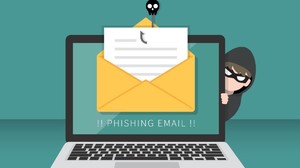Posted on Jan 14, 2022
In the fourth edition of the Phishing and Fraud Report, it was discovered that phishing incidents rose 220% during the height of the global pandemic compared to past yearly averages. Phishing is the act of placing a piece of virtual bait in front of a computer user and hoping they will bite, e.g., click on a link that will most likely infect the user’s computer with some type of malware.
The phishing scammer will convince the user that they must take immediate action, which prompts people to act our fear, instead of logically considering whether the message has any merit.
Examples that scammers love are emails about unpaid bills, emails instructing you to follow a link NOW to change your password immediately, the PayPal Scam, the Message from HR scam … are you seeing a pattern?
Employees can play a significant role in preventing these phishing attacks by incorporating the following tips:
- Everyone in an organization should learn how to identify and avoid phishing emails
- Use a multi-factor authentication as a necessary layer of protection
- Never click on an email that seems suspicious. No, you really didn’t win the Australian lottery.
- Remember that banks and other regular businesses never ask users to send personal information via email.
- Get, or improve, your company’s email security software.

